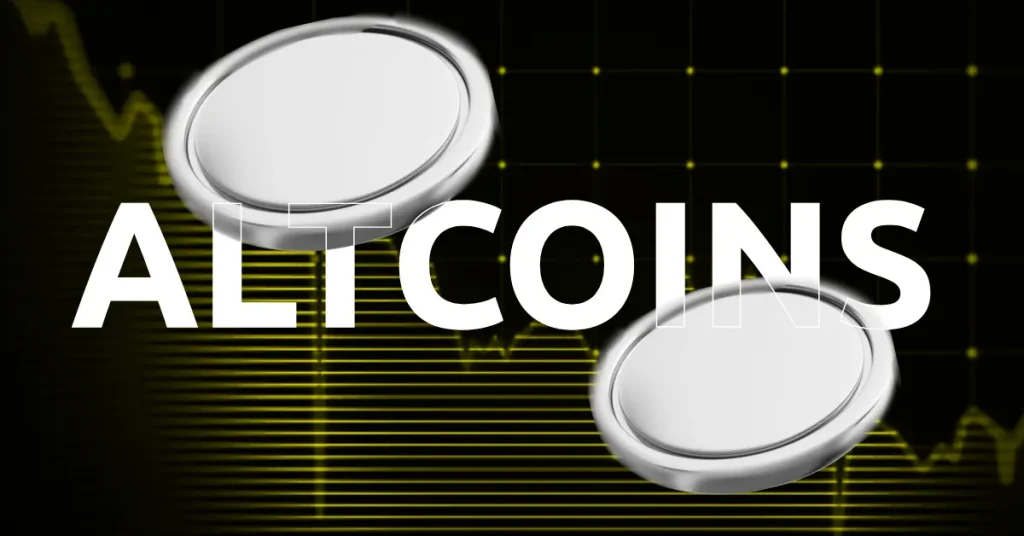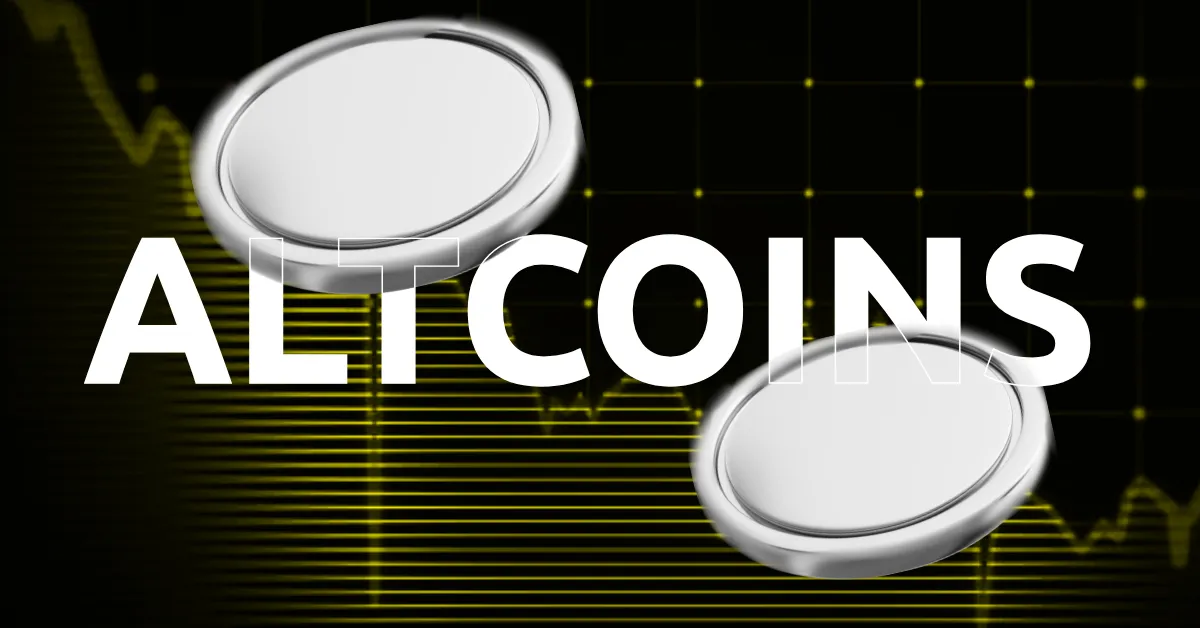
The Untapped Potential of Low-Cap Altcoins in 2025
The cryptocurrency market has always been a rollercoaster of opportunities and risks. As we approach 2025, the spotlight is shifting towards low-capitalization (low-cap) altcoins, which are often overshadowed by the giants like Bitcoin and Ethereum. These smaller digital assets, with their potential for explosive growth, are attracting investors seeking the next big thing. This report delves into the low-cap altcoin landscape, exploring the factors driving interest, identifying promising candidates, and outlining key considerations for investors.
The Appeal of Low-Cap Altcoins
Low-cap altcoins, typically defined as cryptocurrencies with a market capitalization below $500 million, offer a unique investment proposition. Their small size means that even a modest influx of capital can trigger significant price appreciation. This potential for exponential growth is a major draw for investors seeking to outperform the broader market.
High Growth Potential
The primary appeal of low-cap altcoins lies in the possibility of achieving substantial returns. A successful low-cap altcoin can experience growth rates far exceeding those of larger, more established cryptocurrencies. For instance, early investors in projects like Chainlink (LINK) and Polygon (MATIC) saw their investments multiply hundreds of times over. While past performance is not indicative of future results, the potential for such gains continues to attract investors.
Innovation and Disruption
Many low-cap altcoins are associated with innovative projects and technologies that aim to disrupt existing industries or address specific needs within the crypto ecosystem. Investing in these coins can be seen as supporting groundbreaking advancements. For example, projects focusing on decentralized finance (DeFi), artificial intelligence (AI), and the metaverse are at the forefront of technological innovation.
Early Adoption Advantage
Investing in a low-cap altcoin early on provides the opportunity to be among the first to recognize its potential. As adoption increases and the project gains traction, the value of the investment can rise significantly. Early adopters of Bitcoin and Ethereum reaped substantial rewards, and the same could be true for the next generation of low-cap altcoins.
Diversification
Low-cap altcoins can offer diversification benefits to a crypto portfolio. Their price movements are often less correlated with Bitcoin and Ethereum, providing a hedge against market fluctuations. This diversification can help mitigate risks and enhance overall portfolio performance.
Key Factors to Consider When Identifying Promising Low-Cap Altcoins
Selecting the right low-cap altcoins for investment requires careful research and due diligence. It’s crucial to look beyond short-term hype and focus on projects with strong fundamentals and long-term viability.
Team and Community
A strong and experienced development team is essential for executing the project’s roadmap and overcoming challenges. A vibrant and engaged community indicates genuine interest and support. Projects with transparent and active teams are more likely to succeed in the long run.
Technology and Innovation
The underlying technology should be innovative and address a real-world problem or need. Look for projects with unique features or advantages over existing solutions. For example, projects that offer scalable solutions to blockchain’s inherent limitations or those that leverage emerging technologies like AI and the metaverse are particularly promising.
Tokenomics
The tokenomics, or economic model of the cryptocurrency, should be designed to incentivize participation and promote long-term value. Factors to consider include the total supply, distribution mechanism, and staking or governance rewards. A well-designed tokenomics model can ensure the sustainability and growth of the project.
Market Opportunity
The project should target a growing market with significant potential. Assess the competitive landscape and identify projects with a clear competitive advantage. For instance, projects that address underserved markets or offer unique solutions in established sectors like DeFi and gaming are more likely to succeed.
Partnerships and Adoption
Strategic partnerships with established companies or organizations can validate the project’s credibility and accelerate adoption. Real-world use cases and integrations are strong indicators of long-term potential. Projects that have already secured partnerships with reputable entities are more likely to gain traction.
Liquidity
Adequate trading volume and liquidity are essential for buying and selling the altcoin without significant price slippage. Projects with low liquidity can be challenging to trade, making them less attractive for investors.
Whitepaper Analysis
A comprehensive whitepaper should clearly articulate the project’s vision, technology, and roadmap. Scrutinize the document for realistic goals and well-defined strategies. A well-written whitepaper is a strong indicator of a project’s potential for success.
Top Sectors for Low-Cap Altcoin Opportunities in 2025
Several sectors within the cryptocurrency market are poised for significant growth in 2025, presenting promising opportunities for low-cap altcoins.
Decentralized Finance (DeFi)
DeFi continues to revolutionize traditional finance by offering decentralized lending, borrowing, trading, and other financial services. Low-cap altcoins in this space that offer innovative solutions or target underserved markets could see substantial growth. For example, projects that focus on cross-chain interoperability or offer unique DeFi products are particularly promising.
Artificial Intelligence (AI)
The intersection of AI and blockchain is creating new possibilities for decentralized AI models, data marketplaces, and AI-powered applications. Low-cap altcoins focused on these areas could be at the forefront of this emerging trend. Projects that leverage AI to enhance blockchain security, scalability, or usability are likely to gain traction.
Metaverse and Gaming
The metaverse and blockchain gaming are gaining traction, with virtual worlds and play-to-earn models attracting a growing user base. Low-cap altcoins that power these platforms or offer unique in-game assets could benefit from this growth. Projects that focus on creating immersive and engaging gaming experiences are particularly promising.
Layer-2 Scaling Solutions
As blockchain networks face scalability challenges, layer-2 solutions that enable faster and cheaper transactions are becoming increasingly important. Low-cap altcoins that are developing innovative layer-2 technologies could see increased adoption. Projects that offer scalable and secure solutions to blockchain’s inherent limitations are likely to succeed.
Decentralized Social Media
Social media platforms built on blockchain technology offer users greater control over their data and content. Low-cap altcoins powering these platforms could challenge traditional social media giants. Projects that focus on creating decentralized and user-centric social media platforms are particularly promising.
Examples of Low-Cap Altcoins Showing Promise
It is important to note that the cryptocurrency market is inherently volatile, and any investment carries risk. The following examples are purely illustrative and should not be taken as financial advice.
Verasity (VRA)
Verasity is a blockchain-based platform focused on combating ad fraud and increasing engagement in the online video ecosystem. The platform uses blockchain technology to ensure transparency and security in online advertising, addressing a significant issue in the digital advertising industry.
COTI (COTI)
COTI is a fintech platform that enables businesses to create their own payment solutions and digital currencies. The platform offers a range of financial services, including payment processing, digital wallets, and stablecoins, making it a promising player in the fintech space.
Ultra (UOS)
Ultra is a blockchain-based gaming distribution platform that aims to provide a fairer and more transparent experience for gamers and developers. The platform offers a range of features, including decentralized gaming assets, in-game economies, and community-driven governance, making it a promising player in the blockchain gaming space.
Helium (HNT)
Helium is a decentralized wireless network powered by blockchain technology, allowing users to earn rewards for providing network coverage. The network offers a range of use cases, including IoT device connectivity, asset tracking, and decentralized wireless networks, making it a promising player in the decentralized infrastructure space.
Jupiter (JUP)
Jupiter is a key liquidity aggregator on the Solana blockchain, facilitating seamless token swaps and DeFi interactions. The platform offers a range of features, including multi-chain support, advanced trading tools, and community-driven governance, making it a promising player in the DeFi space.
Akash Network (AKT)
Akash Network is a decentralized cloud computing marketplace, offering a more affordable and flexible alternative to traditional cloud providers. The platform offers a range of features, including decentralized cloud computing, community-driven governance, and advanced security measures, making it a promising player in the decentralized cloud computing space.
Risks and Challenges of Investing in Low-Cap Altcoins
While low-cap altcoins offer the potential for high returns, they also come with significant risks and challenges.
Volatility
Low-cap altcoins are highly volatile, and their prices can fluctuate dramatically in short periods. This volatility can lead to substantial gains or losses, making it crucial for investors to manage their risk exposure carefully.
Liquidity
Liquidity can be limited, making it difficult to buy or sell large amounts of the altcoin without affecting the price. This lack of liquidity can make it challenging to exit positions quickly, increasing the risk of losses.
Scams and Fraud
The low-cap altcoin market is susceptible to scams and fraudulent projects. Investors should be cautious and conduct thorough research before investing in any low-cap altcoin. Projects with transparent and active teams are more likely to be legitimate.
Lack of Regulation
The regulatory landscape for cryptocurrencies is still evolving, and low-cap altcoins may be subject to increased regulatory scrutiny. Investors should stay informed about regulatory developments and be prepared for potential changes in the regulatory environment.
Project Failure
Many low-cap altcoin projects fail to deliver on their promises, leading to losses for investors. It’s crucial to conduct thorough due diligence and invest in projects with strong fundamentals and long-term viability.
Risk Mitigation Strategies
To mitigate the risks associated with investing in low-cap altcoins, investors should adopt a calculated and informed approach.
Diversification
Spread investments across multiple low-cap altcoins to reduce the impact of any single project failing. Diversification can help mitigate risks and enhance overall portfolio performance.
Due Diligence
Conduct thorough research and due diligence before investing in any low-cap altcoin. Look for projects with strong fundamentals, transparent teams, and clear roadmaps. Investors should also scrutinize the project’s whitepaper, tokenomics, and market opportunity.
Risk Management
Set stop-loss orders to limit potential losses. Investors should also consider using risk management tools like portfolio rebalancing and position sizing to manage their risk exposure.
Long-Term Perspective
Invest with a long-term perspective and be prepared to weather market volatility. Low-cap altcoins are highly volatile, and short-term price fluctuations should not deter investors from focusing on the project’s long-term potential.
Stay Informed
Keep up-to-date with the latest news and developments in the cryptocurrency market. Investors should also stay informed about regulatory developments and be prepared for potential changes in the regulatory environment.
Conclusion: A Calculated Approach to Low-Cap Altcoin Investing
The low-cap altcoin market presents both opportunities and risks for investors in 2025. While the potential for high returns is enticing, it’s crucial to approach this space with a calculated and informed strategy. By focusing on projects with strong fundamentals, conducting thorough due diligence, and managing risk effectively, investors can increase their chances of success in this dynamic and rapidly evolving market. Remember, the key is not to chase hype, but to identify promising projects with long-term potential and the ability to thrive in the ever-changing crypto landscape. The future of finance is being written now, and low-cap altcoins may hold some of the most exciting chapters.





